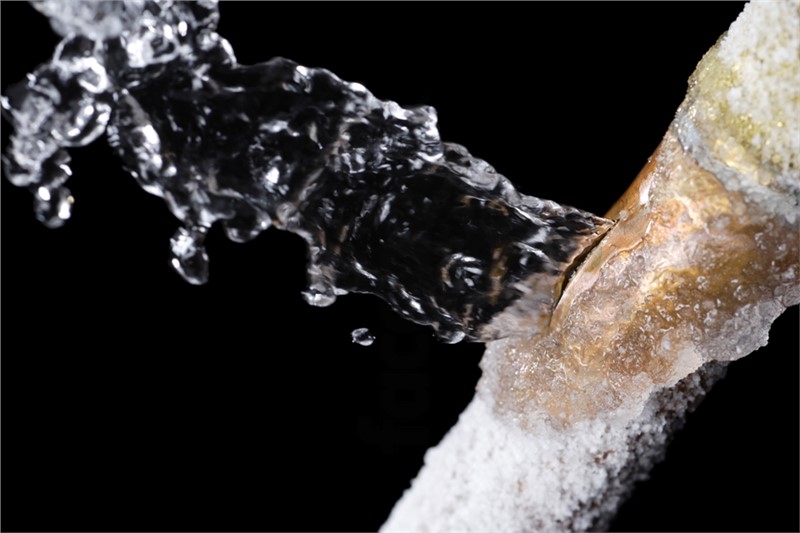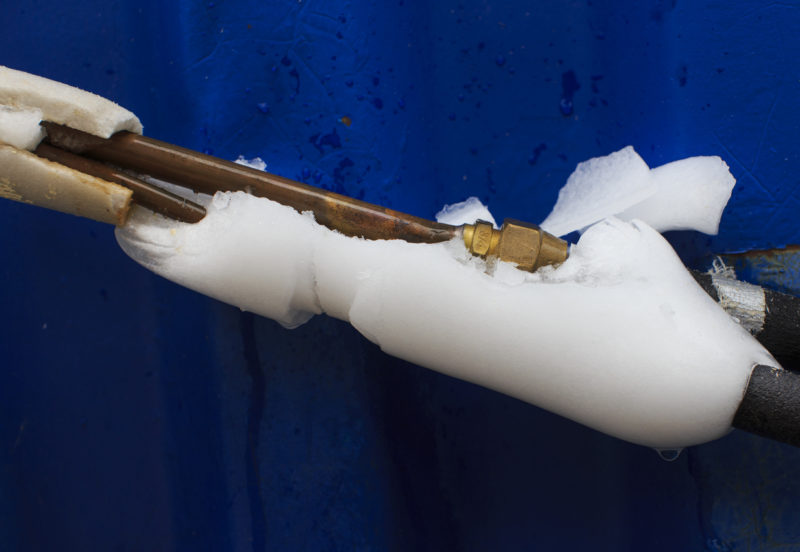What to Do When Your AC Pipe Gets Frozen: Detailed Guide
What to Do When Your AC Pipe Gets Frozen: Detailed Guide
Blog Article
Almost everyone seems to have his or her own theory on the subject of Have a Frozen AC Line? Here’s How to Fix It.

Introduction
Finding that your air conditioning pipe is frozen can be concerning, specifically during warm summer months when you rely on your ac system one of the most. Comprehending what to do in such a situation is important to avoid additional damages to your cooling system and guarantee your convenience inside.
Recognizing the Causes
A number of elements can contribute to the freezing of an a/c pipe. Recognizing these reasons can assist you deal with the issue efficiently.
Lack of Airflow
One common cause of a frozen air conditioning pipe is inadequate air flow. When the air movement over the evaporator coil is restricted, it can create the coil to drop below freezing temperature level, leading to ice development on the pipe.
Low Refrigerant Levels
Insufficient cooling agent degrees in your a/c system can also result in a frozen pipe. Reduced cooling agent levels can cause the stress in the system to go down, leading to the freezing of wetness on the evaporator coil.
Cold Weather Conditions
In colder climates, freezing temperature levels outside can contribute to the freezing of air conditioner pipes. If your air conditioning device is not effectively protected or if there are leakages in the ductwork, cool air can infiltrate the system, creating the pipe to freeze.
Dirty Air Filters
Unclean or stopped up air filters can limit airflow in your a/c system, leading to different concerns, including an icy pipe. It's important to replace or clean your air filters on a regular basis to ensure appropriate airflow and stop ice buildup.
Indicators of a Frozen Air Conditioner Pipe
Identifying the indications of an icy a/c pipeline is critical for timely activity.
Reduced Airflow
If you discover a considerable decrease in air flow from your vents, it can show a frozen pipe.
Ice Buildup on the Pipe
Visible ice accumulation on the refrigerant line or the evaporator coil is a clear indicator of an icy air conditioning pipeline.
Weird Sounds from the Unit
Uncommon noises, such as hissing or bubbling, coming from your air conditioning device can indicate that there's ice present on the pipeline.
Immediate Actions to Take
When confronted with a frozen AC pipeline, it's essential to act swiftly to stop more damage to your air conditioning system.
Shutting off the air conditioning
The first step is to shut off your air conditioning system to prevent the system from running and exacerbating the concern.
Checking for Blockages
Examine the location around the interior unit for any kind of obstructions that may be obstructing air movement, such as furniture or curtains.
Thawing the Pipe
You can use mild methods like placing towels soaked in warm water around the frozen pipe to aid thaw it gradually.
Safety nets
Taking safety nets can help stay clear of future events of an icy AC pipe.
When DIY Methods Fail
If your efforts to thaw the pipe or address other issues are not successful, it's time to call in a professional.
Importance of Hiring a Professional HVAC Technician
A qualified HVAC specialist has the proficiency and devices needed to identify and fix issues with your air conditioner system safely and successfully.
Normal Maintenance Checks
Arrange normal upkeep contact an expert HVAC technician to guarantee that your air conditioning system is running successfully.
Transforming Air Filters
Routinely change or cleanse your air filters to stop air movement constraints and maintain optimum performance.
Insulating Exposed Pipes
If your air conditioner pipelines are revealed to chilly temperatures, take into consideration insulating them to avoid cold throughout winter season.
Looking For Professional Help
If DIY approaches fail to fix the problem or if you're not sure regarding exactly how to proceed, it's best to seek assistance from a certified HVAC professional.
Verdict
Dealing with a frozen air conditioner pipeline can be an aggravating experience, yet knowing just how to respond can aid reduce damage and restore convenience to your home. By understanding the reasons, acknowledging the indicators, and taking prompt activity, you can properly resolve the issue and prevent future events.
What to Do If Your AC Line Is Frozen
Make Sure All Supply and Return Air Vents Are Open
If you notice problems with airflow, the first thing you should do is check your supply and return vents. Supply vents distribute clean, conditioned air throughout your home. As this air becomes stale, it’s pulled into the return vent, where it’s reconditioned before being sent back out through the supply vent.
When these vents are closed, air won’t flow in the home. Before examining your AC, check the vents in every room and ensure they’re all open.
Check for a Dirty Air Filter
Another possible cause of limited airflow is a dirty air filter. Your air conditioner’s filters catch elements you don’t want to breathe in, such as dirt and dust. Over time, filters can become clogged, ultimately blocking air from flowing in and out. The lack of airflow can then cause the entire coil to freeze and will completely restrict any air from moving through it. The AC may need to be powered off for one to two days to allow the coil to thaw after replacing the filter to allow proper functioning of the unit. This debris can also accumulate on your AC’s evaporator coil, requiring a more serious repair. In general, air filters should be cleaned regularly (about every two weeks).
Assess Your Outdoor Unit
In addition to checking your AC, assessing the outdoor unit is a good idea. Also known as the condensing unit, it works with your interior unit to release heat outside. An issue with the outdoor unit can result in rising internal temperatures.
Overgrown Shrubs or Clogged Leaves
From leaves and twigs to shrubs and debris, there’s no shortage of outdoor elements that can accumulate around your condensing unit. When these elements get lodged inside the unit, they can block airflow. Fortunately, removing the blockage can solve the problem.
Sounds of a Broken Fan
Shrubs and leaves aren’t the only things that can impede your outdoor unit’s airflow. If the fan is broken, the unit won’t be able to properly get rid of heat — which means the internal temperature won’t go down. First, make sure the fan is spinning. If it is, check for the following sounds of a broken fan:
Buzzing Rattling Screeching Hissing Clicking Preventative Measures
Nobody wants to deal with a frozen AC line. In addition to causing problems with your air conditioner, they require professional repairs. On the bright side, there are preventative measures you can take to help ensure this issue doesn’t arise in the first place.
https://www.coopergreenteam.com/blog/what-to-do-if-ac-line-frozen

I recently found that write up on What Causes AC Pipes To Freeze? while exploring the web. Make sure you take the opportunity to promote this page if you appreciated it. Thank you for going through it.
Call Today Report this page